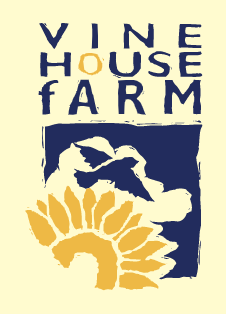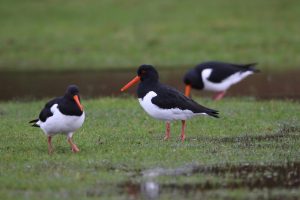
May has been drier than average with only 29mm or 1.2ins of rain falling here in Deeping St Nicholas. With April also being a very dry month, all our wheat and rape crops are in need of rain. Every bit of rain helps, but half an inch or 12mm soon disappears when the soil is dry. May went out with a cold snap, but it has been the second warmest that I have recorded in the last 50 years.

The sunflowers were drilled during the first week of May in the warm weather and as it stayed fairly warm, they were not long emerging. If pigeons and pheasants find our emerging sunflowers we are in trouble, as while a person is one side of the field frightening the pigeons away, they are landing in the other side as they are so keen to get at the shoots. We use bangers on the field and fly kites above before the sunflowers appear – this keeps the birds away until they find out what is in the field. As a further preventative measure, we cover the outside 12 metres of the sunflower field with plastic, as birds tend to creep in from the outside, looking for the emerging sunflowers especially at 5am which is when they want their breakfast.
This isn’t a problem for growing sunflowers in mid and southern France, and also in Spain, as wood pigeons don’t often breed because water isn’t generally available. The pigeon family need a good supply of water during the summer to make pigeon milk, which their digestive system makes to be regurgitated to their young.
The result is that our scaring techniques worked this year and we have a good plant of sunflowers. Having drilled the sunflowers, we had to wait for some rain before we drilled the millet. A big seed can be drilled three or four inches down, but a small seed mustn’t be deeper than two inches and there wasn’t any moisture in the top two inches in early May. We had some rain on May 11th and again on May 18th so we drilled the millet on the following days after the rain and they are now all up and growing. Our irrigators have been out watering our winter wheat crops in Baston and Langtoft Fens – areas where the subsoil is sand and gravel.
Weed control in our organic crops has been easy this Spring because it has been dry. In a wet Spring, the weeds get uprooted by the hoe, but will root again in the shelter of the growing crop. We haven’t finished weeding yet though, as we still have the wild oats and thistles to pull. All the wild oats must be pulled and maybe not all the thistles as it is not the best of jobs!
We grow about 1.5 acres of asparagus organically and that has been picked by two Ukrainian workers. They are staying with one of our neighbours in Baston Fen and come from the south east of Ukraine, within 100 miles of Odessa. They will move on to roguing in the organic crops and we expect to have work for them for the rest of the year.
We still have a lot of last year’s potato crop in store, more than half of them are on contract to Mccain’s and all destined for MacDonalds. We normally keep them until June and expect to be sending them away by the time you read this newsletter. The other half of the crop are red potatoes which should have been sold by now, but there doesn’t seem to be any demand for red potatoes this year.


The warm May has benefited the Tree Sparrows, they have had their best first brood in four years. When it is cold, our central heating comes on automatically, but wildlife has to find food on a cold day and even more food on a cold and wet day. This is when insects go into hiding making it more difficult to keep their young fed.
Reed Buntings have reduced in numbers over the past three years. Four years ago, I was feeding about 400 in various places on the farm. In winter 2020/21 I was feeding a lot less, and last winter I was feeding around 100. Five years ago the rape crops were full of singing Reed Buntings but this year there are very few.
One bird that has increased in numbers locally is the Garden Warbler. Five years ago I‘d never seen or heard one in Deeping Fen, but they have gradually increased to three or four singing males. You all know what a little brown job is, the Garden Warbler is a classic LBJ, it is a medium grey brown above and a little bit lighter in colour underneath. Its song is similar to a Blackcaps and it sings in the bushes, not on the top of them, so they are quite difficult to see.
Linnets are doing well, we have the habitat for them – they like bramble patches and with no mowing the bramble patches have formed in various places on the farm. They are a species that feed their young on unripe seeds. The average bird in your garden takes its nestlings a beak full of insects and only feeds one chick on each visit. That means that they have to obtain the food ideally within 50 yards of their nest, that is why they have a territory as they are protecting a food source. In our gardens, which very often are a rich food source, territories are small, they will overlap and then there is fighting. The Linnet, Goldfinch and Greenfinch have a very small territory, as they don’t protect a food source. They feed their young on unripe seeds which they can travel up to a mile to collect. They store the unripe seeds in their gullet and can feed the whole brood in one visit.
I started feeding Linnets in November 2018, after I had disturbed more than 100 that were roosting in a bramble bush at dusk one November. I fed both rape and millet near the bramble bush and I attracted Linnets and Reed Buntings. A month later, I separated the rape from the millet and every Linnet went to the rape and every Reed Bunting went to the millet. I continued feeding through until June and in Spring 2019 we had three pairs of Linnets nesting in the garden and have had them every year since. The place where I am feeding them is only about 900 yards away from the farmhouse garden.
Our wetland in Baston Fen is doing well, we seem to have less predation this year than previous years. In previous years, I believe Herons have been the major predator to young birds. If it moves and it can be swallowed, it is fair game for a Heron. For some reason we have less Herons visiting the wetland this year.



